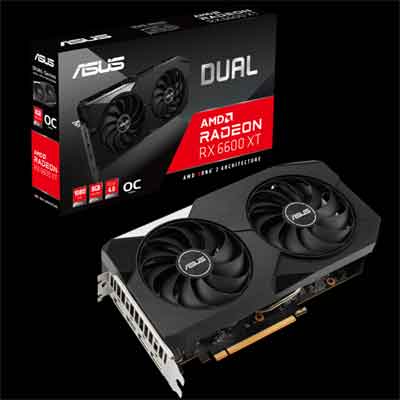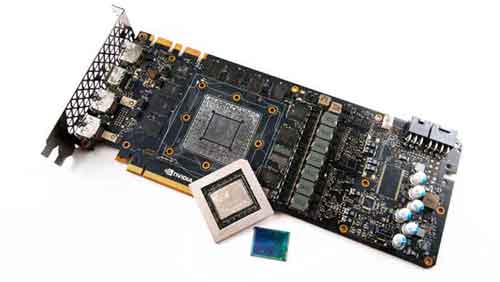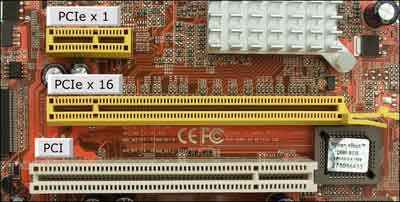Loading…
What Is A Graphics Card, And How Do They Work?
What is a graphics card? The simple answer is a hardware component that puts the graphics that you see on to your computer monitor. However, a graphics card's job is difficult and complex, but, understanding how graphic cards work is easy and simple to understand.
All computer devices require a graphics “service” of some description. How else would you see anything on your monitor? However, the modern-day question is:- Why type of graphics card do you require?
The approach in this article is to explain the graphic card in further detail, including the different types of video cards available today. We also look at the hardware components that make up a graphics card, what is required to install a graphics card, and a brief explanation of how graphics cards work.
Join The Human Byte — Get The Ultimate BIOS Update Guide
- Receive the ultimate BIOS update pack
- Includes a set of checklists and flowcharts to support your BIOS update process
- Also includes the full set of common FAQs from users who experience BIOS update issues
- Receive regular emails with practical information you can use
- I only use your e-mail for the newsletter. Unsubscribe anytime.
What Is A Graphics Card?
Graphics cards quickly render, or paint, images on your computer monitor. They do this by converting the binary data, i.e. the 0's and 1's, in to a type of “signal” that your monitor can understand. Think of the graphics card as a language translator.
As with all computer hardware components, there better and faster your video card is, the more crisp and smoother each image can be displayed on your screen.
There are two main types of graphics card. They are the integrated graphic card, and the discrete graphics card.
 What Is A Graphics Card?
What Is A Graphics Card?A Typical Example of A Discrete Graphics Card
Source:- trustedreviews.com
Integrated graphics cards are integrated in to the device's motherboard, just like you get with sound cards. All traditional computers and laptops come with integrated components by default, and are included in the total cost of your device.
They are a fixed component soldered on to the motherboard, so they cannot be upgraded or replaced (unless you replace your motherboard). Modern motherboards have the integrated Graphics Processor Unit (GPU) integrated in to the Central Processing Unit (CPU). More on this later.
Integrated video cards use very little power, and the Power Supply Unit (PSU) for the device provides all the power required to operate the integrated card. Furthermore, modern operating systems are more than capable of allocating device drivers, so they work properly without any intervention from you.
Discrete graphics cards are a dedicated hardware components you fit in to one of your motherboards expansion slots (more on this later).
These video cards are usually for those who are keen gamers, or heavy users of image and video manipulation tools. Less powerful integrated cards are prone to “lagging” and “jitter” for these specialist users, without the additional processing time and dedicated memory.
Lagging is where the moving images on screen “lag” behind the audio and inputs of the gamers, such as firing a weapon or jumping off a wall. Jitter is where the graphics on screen flicker at random intervals, which I expect can be quite distracting in the middle of a fast-paced online game.
It will also come as not surprise that discrete video cards are easier up upgrade, but consume much more power.
What Is a Graphics Card?
The Essential Components of A Discrete Graphics Card!
Discrete Graphics Cards are made up of four main components. The main component is the Graphics Processor Unit (GPU). This is the brains of the outfit, and is the actual translator that enables the video data stream to appear on a computer monitor.
The GPU is designed to perform the specific mathematical calculations needed for rendering the screen, such as the mapping of the pixels, and their colour types and colour depths etc. A dedicated processor means that your device's CPU is not overly consumed with graphics instructions, which is the case with integrated graphics cards.
Processors produce a lot of heat. This is why modern graphics cards come with heat sinks and fans. However, the hot air needs to go somewhere. Therefore, your computer chassis must have appropriate ventilation to cope with all the internal heat being produced.
GPU's also consume a lot of power. Therefore, your machine must have the right sized Power Supply Unit (PSU) to operate your device properly. An undersized PSU can cause stability issues with your device.
 What Is A Graphics Card
What Is A Graphics CardThe GPU Exposed
Source:- pcgamesn.com
Video Random Access Memory (VRAM) is dedicated memory for the GPU to hold data about the pixels, and the completed or rendered images until they are displayed on screen (known as a frame buffer).
This is similar to traditional computing RAM, and the traditional CPU cache. However, speed is critical to VRAM, and it also has dual porting capability. Dual-ported RAM simply means that date can be read from it and written to it at (almost) the same time, which supports that need for speed.
This dedicated VRAM means that your device's traditional RAM is not consumed with graphics instructions, which is the case with integrated graphic cards.
Modern-day graphics cards have 1Gb or more of RAM available.
It is also worth noting that modern-day video cards have their own dedicated BIOS chips. This BIOS stores the card's settings (similar to the traditional CMOS) and the Power On Self test (POST) diagnostic information performed at boot up.
A decent monitor is also required to see the final result of all that work the graphics card has been doing. Combined with the other device's hardware components, it is important that the rendered images are painted on to the screen at an acceptable rate. This is known as the Frames per Second (FPS). A minimum frame rate of 60 FPS is expected to deliver smooth motion, scrolling, and interaction.
What Is a Graphics Card?
What Is required To Install Discrete Graphics Cards!
The fourth component, alongside the GPU, VRAM and Monitor, is a motherboard with appropriate expansion slot in which to fit your discrete graphics card.
I've seen and fitted different graphics cards throughout my IT career. I recall traditional expansion slots such as the PCI (Peripheral Component Interconnect) and AGP (Accelerated Graphics Port). They all have a similar design on the motherboard, albeit with different lengths and the number of notches, so fitting is similar to traditional RAM, or a discrete Sound Card.
PCIe (Express) expansion slots are currently the preferred slot for modern graphics cards, as they offer the highest data throughput on the motherboard.
 What Is A Graphics Card
What Is A Graphics CardDifferent (Graphics Cards) Expansion Slots
Source:- howtogeek.com
It is worth noting that the right physically sized graphics card is an important factor before you buy. Modern computer chassis' tend to be low-profile form factors, and therefore smaller than traditional ATX or Full Height chassis. Therefore, a smaller (physically) sized graphics card is required for low profile machines.
Modern motherboards have the capability to accommodate multiple graphics cards. Technology such as Scalable Link Interface, or SLI, from NVIDIA, and Crossfire X, from AMD, are for serious gamers, and effectively link or team up the graphics cards for added performance.
Discrete graphics cards usually come with a selection of ports and cables to ensure they can be connected to your monitor. Multiple monitor connection is determined by the specification of the graphics card you purchased, or was shipped with your device. Modern ports include the Display Port, HDMI and DVI ports.
In the next section, we briefly look at how graphics cards work.
How Graphics Cards Work
The images on our monitor are made up of millions of tiny pixels, measured in dots per inch (DPI). The graphics card's job is to decide on what to do with each pixel, i.e. how to set each up and where to put them on screen.
The GPU translate the data from the application, or game, to a “language” the monitor can use to paint the image on screen. This information is sent to the monitor via the graphics card port, through the monitor cable, and into the monitor itself.
The process is quite technical. It designs the image, by creating the frame, like a picture on your wall. Next, it puts the image plan through what is called the rasterization process. This is simply a term that describes the conversion or translation phase, so the image request can be made up of pixels with the relevant shading and colour.
The fact that modern graphics card run through this process between 60 and 120 times per second is astounding.
The how computer monitors work article explains how monitor handle this data from the graphics card in more detail.
What Is A Graphics Card? | Final Thoughts
So, what is a graphics card? I hope this article goes some way to answering your question. There is a lot to consider when buying a video card, but generally, the faster, and more memory a card has, there better it will be.
The question is what type of card is most appropriate for you, and that depends on what activities you do on your computer.
Another consideration is the current specification of your motherboard, RAM and CPU. An outstanding graphics card will be limited by slower or older internal hardware components, and even with an older monitor.
Finally, it is worth having a look at the following articles for further information on this fascinating topic:-
- What is a Graphics Card?, by eBuyer;
- How Graphics Card Work, by How Stuff Works;
- Do I need a Graphics Card?, by Beginner Geek
Was this page helpful?
Thanks! ✅